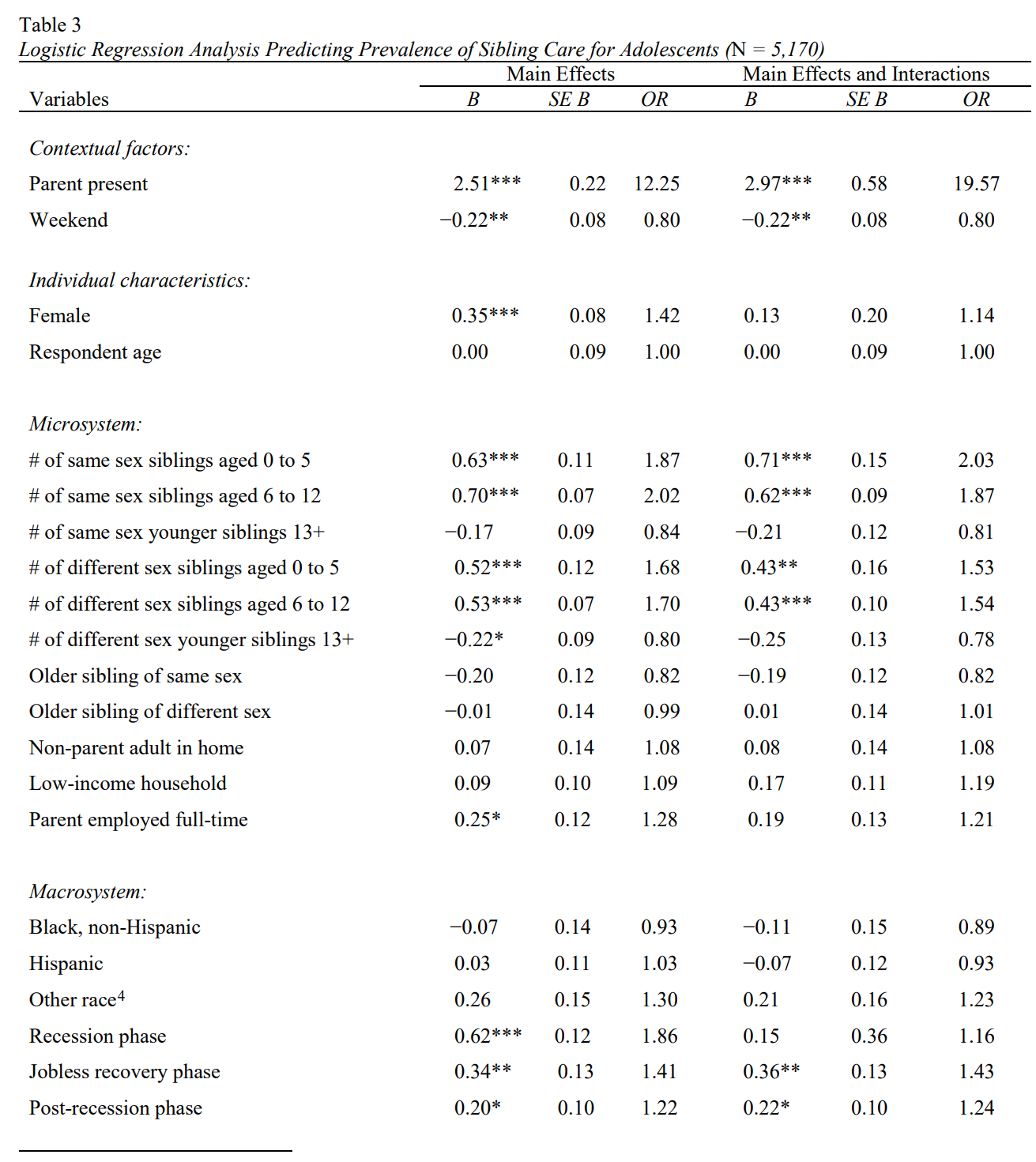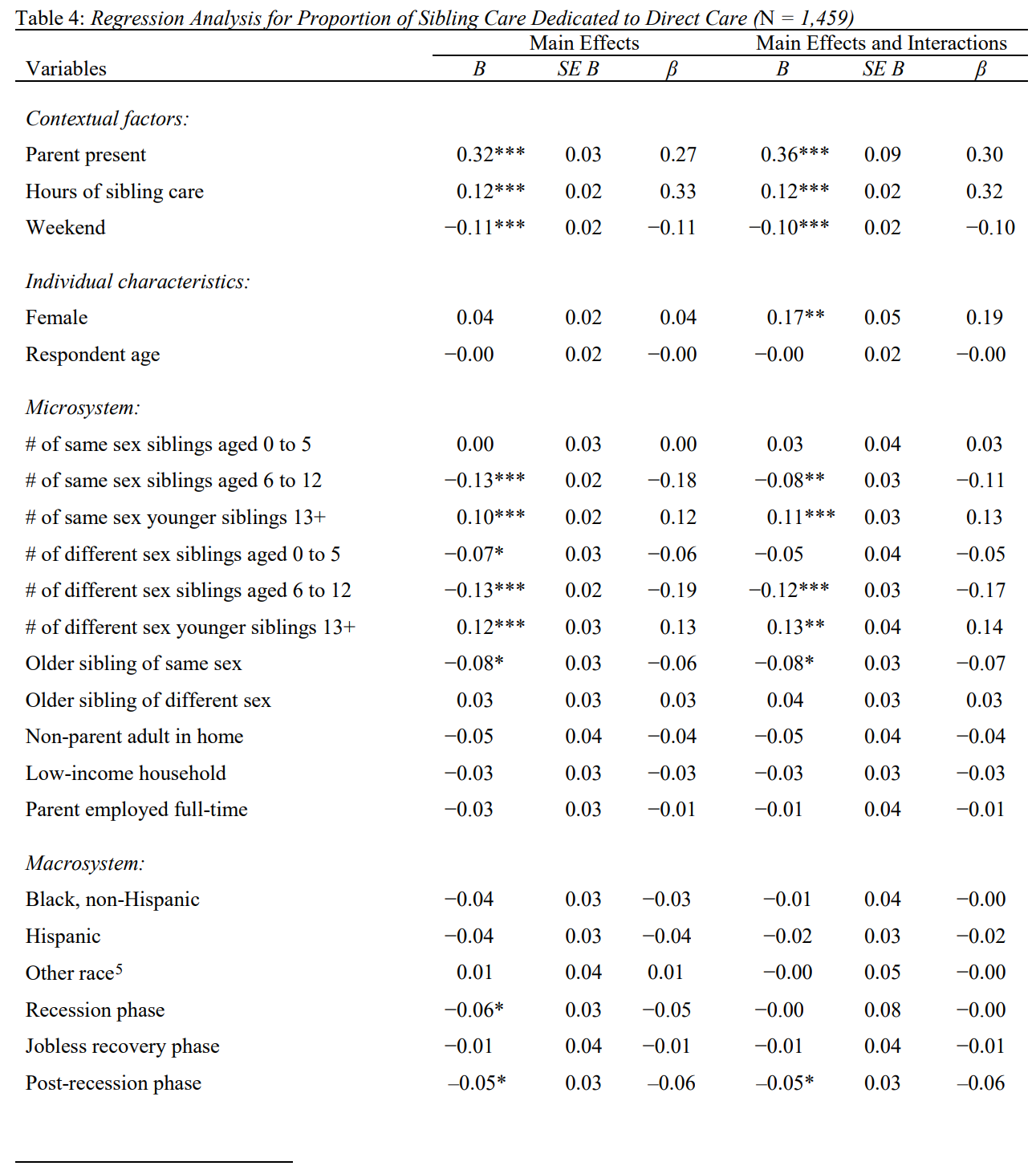Adolescent Caretaking of Younger Siblings
Social Science Research, 2018
Sibling interactions play important roles in socialization; however, little is known about sibling caretaking in contemporary families. This study examined the prevalence of adolescents providing care for younger siblings and the quality of care as associated with a broad spectrum of individual, microsystem, and macrosystem factors.
Recommended citation: Wikle, J. S., Jensen, A. C., & Hoagland, A. M. (2018). Adolescent caretaking of younger siblings. Social science research, 71, 72-84.
More Details
Abstract: Sibling interactions play important roles in socialization; however, little is known about sibling caretaking in contemporary families. This study examined the prevalence of adolescents providing care for younger siblings and the quality of care as associated with a broad spectrum of contextual, individual, microsystem and macrosystem factors. Relying on nationally representative time diary data from the American Time Use Survey, we found that factors at all levels (contextual, individual, microsystem and macrosystem) were associated with sibling caretaking. The caretaker’s sex and the ages and sexes of younger siblings correlated with the incidence and quality of sibling care. Boys more often cared for younger brothers, and girls more often cared for younger sisters. In addition, boys more often played with younger siblings while girls more often provided physical care and talked with younger siblings, mirroring gendered patterns seen in parents.
Data & Methods
We analyzed time use for 5,170 adolescents between the ages of 15 and 18 using the American Time Use Survey (ATUS). We tested two separate models, one for the prevalence, and one for the quality of sibling caretaking. The first model addressed how contextual and individual factors associated with the prevalence of sibling care? The second model is a regression-based analysis of the quality of sibling caretaking.
Key Results
Table 3 shows the results from the logistic regression analysis exploring the likelihood of care provision. In general, engaging in caretaking activities is commonly induced by parents, and more common among teens with younger siblings. Interestingly, this effect is gendered — girls are more likely to engage in childcare than boys, and each is more likely to care for younger siblings of their same sex. Interestingly, there is a time effect in childcare prevalence, with childcare increasing and prevailing following the 2008 Recession.
Table 4 shows a similar analysis examining the quality of sibling care; that is, we examine the proportion of time in sibling caregiving which is dedicated to direct care (e.g. interacting with the sibling rather than simply being home alone with them). Results are similarly gendered, in that girls are more likely to provide direct care; however, teen caregivers are more likely to give direct care to younger siblings that are closer to their own age regardless of sex. Additionally, even though caregiving increased following the recession, the proportion of direct caregiving declined slightly during that period.



Leave a Comment
Your email address will not be published. Required fields are marked *